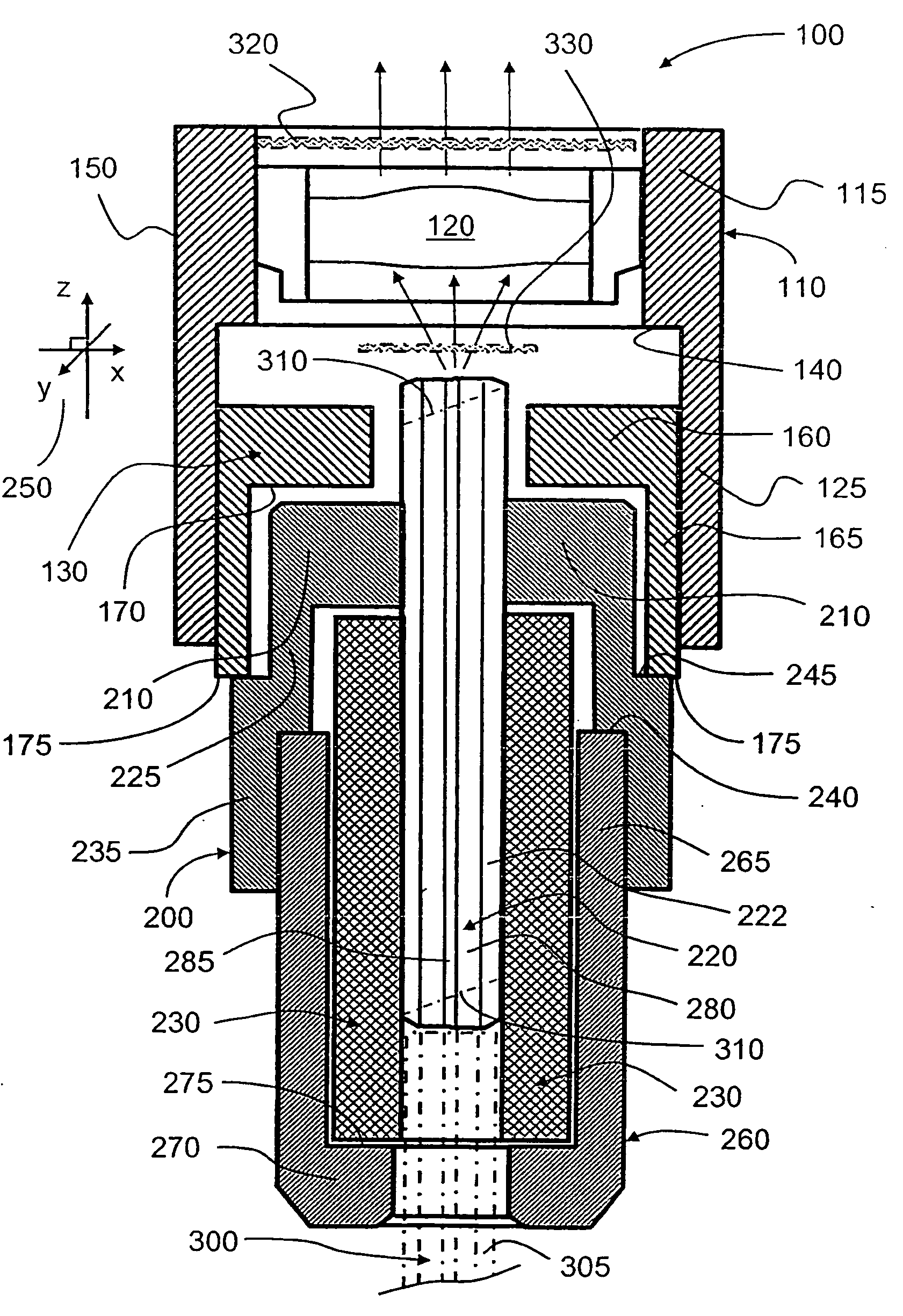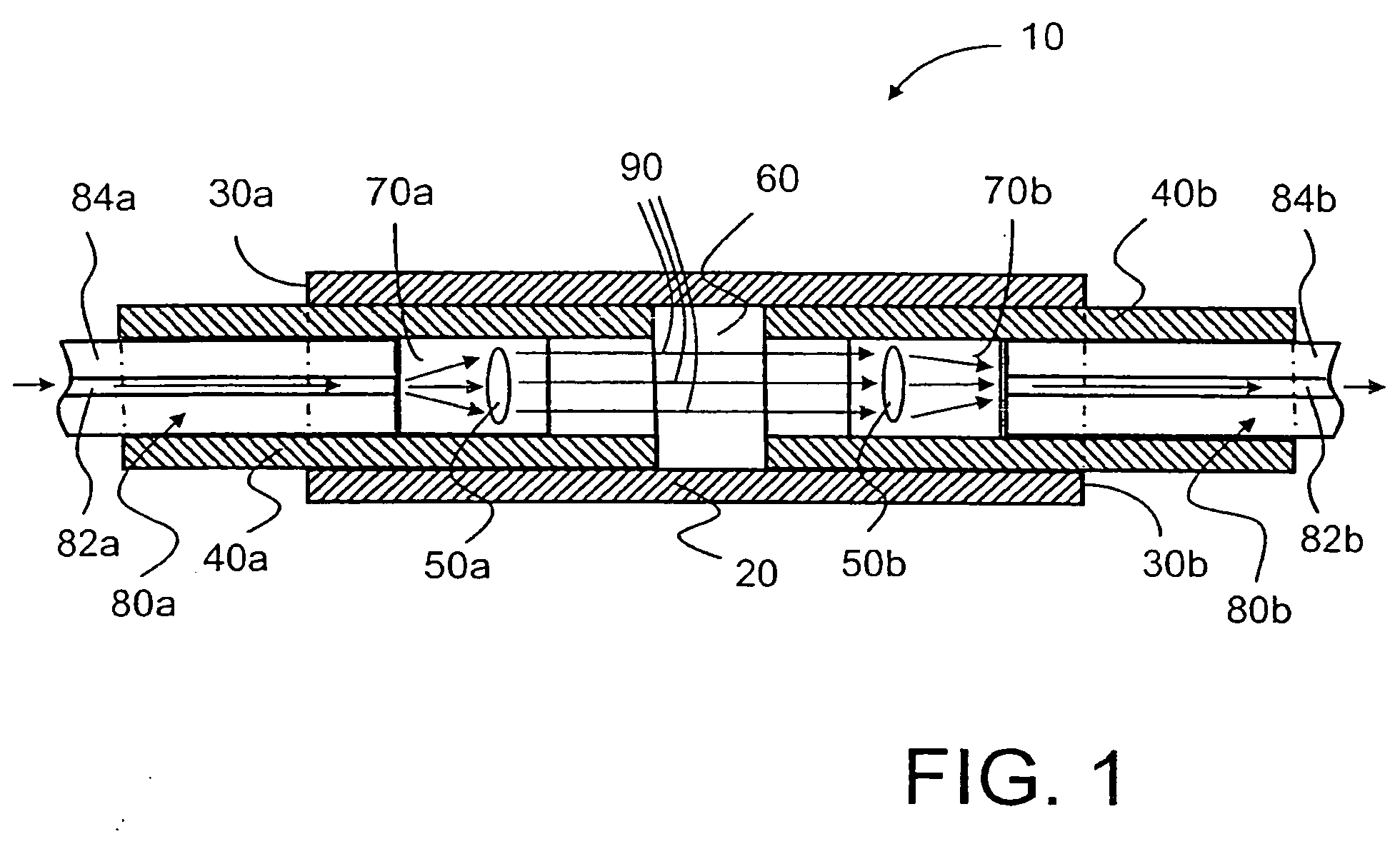Optical Assembly for Repetitive Coupling and Uncoupling
a technology of optical assembly and coupling, applied in the field of optical assembly, can solve the problems of many precision component parts, contamination and condensation of particulates, and the practice of a single precision component is encountered in the field of practi
- Summary
- Abstract
- Description
- Claims
- Application Information
AI Technical Summary
Benefits of technology
Problems solved by technology
Method used
Image
Examples
Embodiment Construction
[0052]An embodiment of an optical assembly according to the present invention is illustrated in FIG. 2, the assembly being indicated generally by 100 and being also known as an Expanded Beam Optical Sub Assembly (EBOSA). The assembly (EBOSA) 100 is capable of being employed to implement an expanded beam connector, and also to implement a free-air communication link capable of being used in field situations where precision alignment apparatus is not available. The assembly 100 comprises an outer lens holder 110 of substantially tubular form, the lens holder 110 having a first portion 115 with relatively thicker wall for receiving a lens 120 therein, and a second portion 125 with relatively thinner wall for receiving a z-axis alignment sleeve 130. A step transition 140 is provided on an inner surface of the lens holder 110, the step transition 140 distinguishing the first portion 115 from the second portion 125. The step transition 140 is also capable of preventing the z-axis alignmen...
PUM
 Login to View More
Login to View More Abstract
Description
Claims
Application Information
 Login to View More
Login to View More - R&D
- Intellectual Property
- Life Sciences
- Materials
- Tech Scout
- Unparalleled Data Quality
- Higher Quality Content
- 60% Fewer Hallucinations
Browse by: Latest US Patents, China's latest patents, Technical Efficacy Thesaurus, Application Domain, Technology Topic, Popular Technical Reports.
© 2025 PatSnap. All rights reserved.Legal|Privacy policy|Modern Slavery Act Transparency Statement|Sitemap|About US| Contact US: help@patsnap.com



